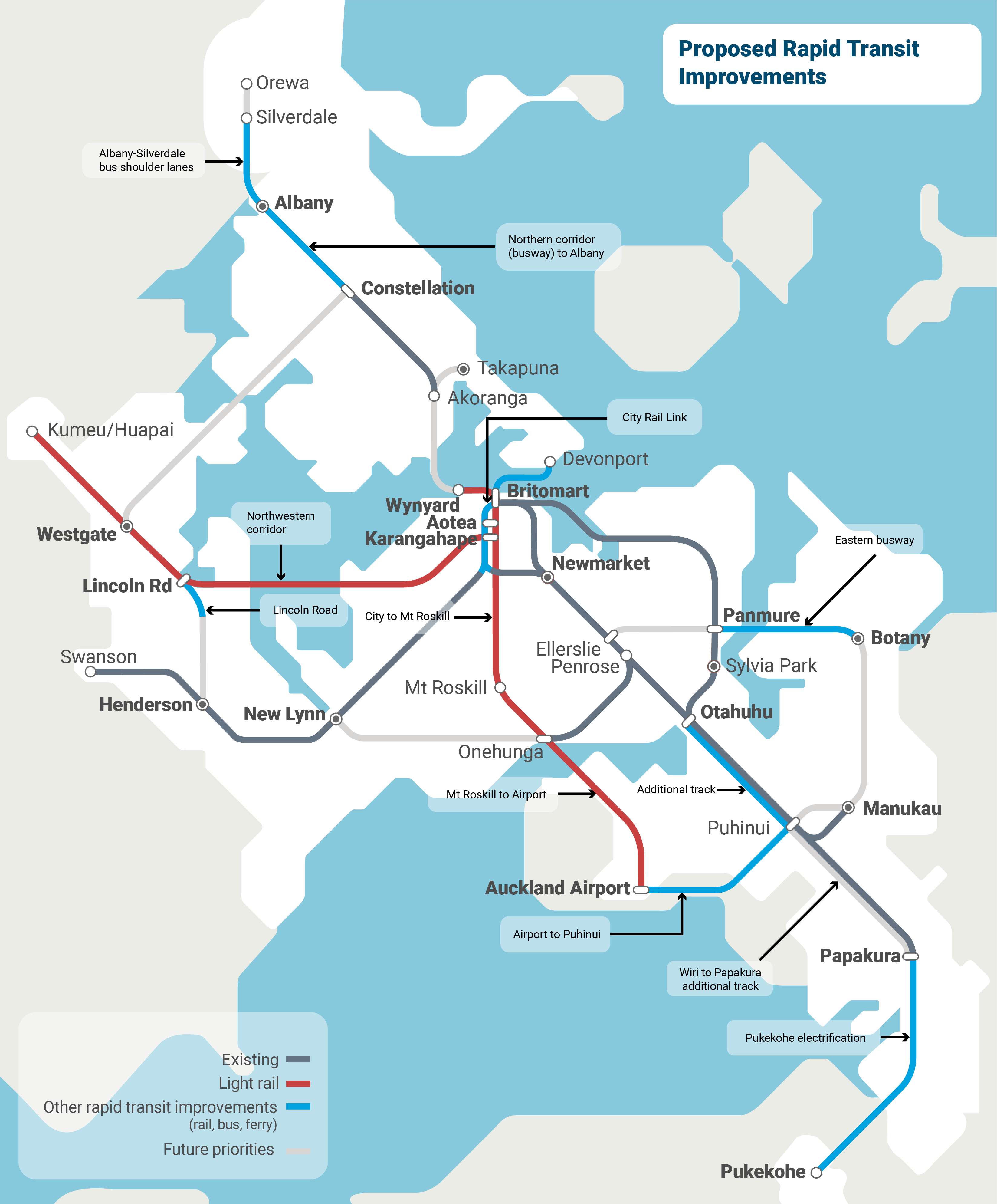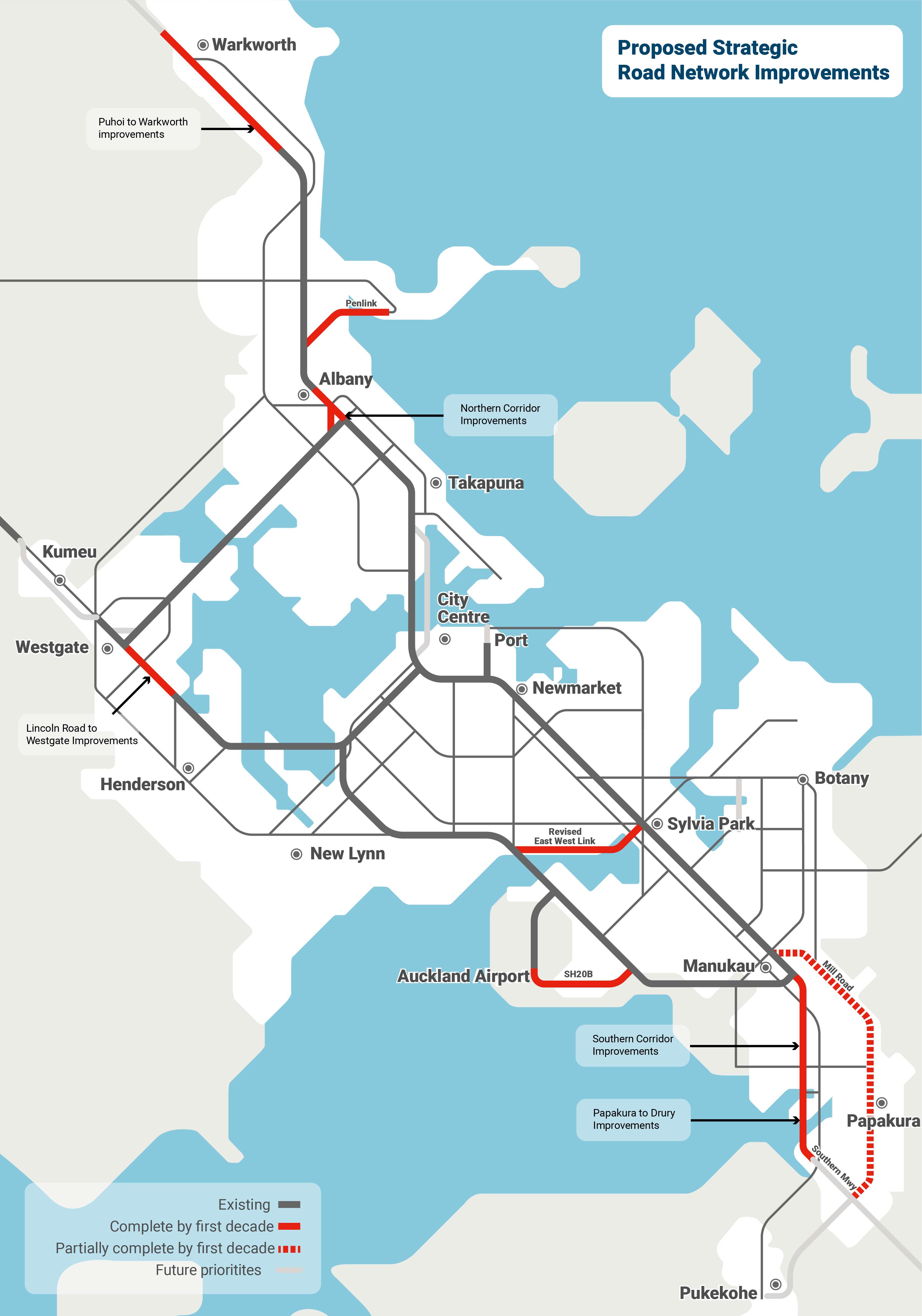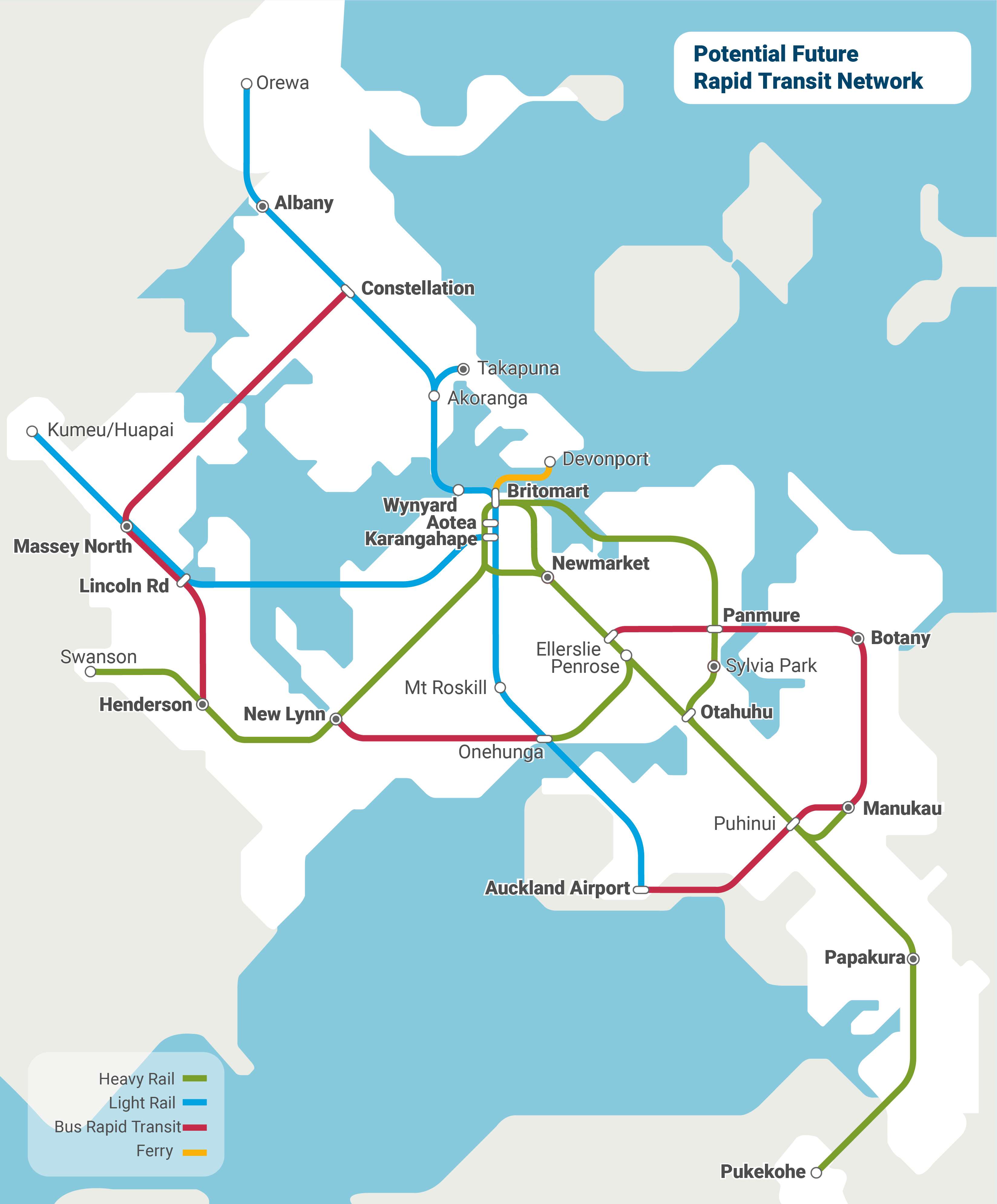COMMENT: For property buyers and investors, it's not so much about following the money but following the transport infrastructure.
Today's announcement by Transport Minister Phil Twyford and Auckland Mayor Phil Goff of a $28 billion transport programme for Auckland gives investors a map to where future value may be found.
It will also help home-buyers make decisions around where they want to live over the next 10 years.
Suddenly, areas burdened by challenging commute times will potentially begin to attract more interest due to the infrastructure projects outlined by Goff and Twyford.
Start your property search
People want to buy in areas that are connected and offer reduced commuting times.
Improved infrastructure will also drive housing development.
Twyford and Goff get this. "This $28 billion plan will help ease the awful congestion that has been caused by a decade of under-investment. We will create a congestion-free rapid transit network and boost other alternatives to driving to help free up the roads, enable growth, and improve safety for drivers and others," Twyford said.
Goff said: "Auckland Transport Alignment Project 2018 (ATAP) balances the need to deal with Auckland's immediate and pressing transport needs, as well as being transformational for the future.
"ATAP reflects the need for efficient roading for green and brownfield housing development, new transport corridors and major arterial routes. But as Auckland grows, we need to move from a focus on roading to a more balanced approach that promotes public transport and active transport networks."
Two of the major roading projects outlined in the report, Penlink, which will connect the Whangaparaoa Peninsula and the Northern Motorway, and Mill Rd, which will improve the connection from Manukau through Takanini to Drury, will undoubtedly spur new housing development. (OneRoof gives a breakdown of Penlink and Mill Road here, while the Herald provides full details of the other projects Twyford and Goff unveiled here.)
The maps contained within the ATAP report show where future value might be found.



Significantly, they indicate the location of what will likely be major transport hubs, where, if the experience of other global cities is anything to go by, commercial and residential development investment will be high. Just as home-buyers will want to cluster around transport hubs, so too will businesses. That means better amenities for existing residents.
For areas such as Whangaparoa, that have been choked off from the rest of the city by hard commute times, these projects will be a source of relief, and spur interest in their property markets.
REINZ chief executive Bindi Norwell has welcomed the announcement, calling the project "a significant investment is to be made into Auckland’s roading, public transport infrastructure and for greenfield and brownfield housing development".
"With the growing Auckland population, there is no doubt that we need more investment in Auckland's transport infrastructure, and today’s announcement will help to create a 21st century transport network for the city," she said.
"The two new roading projects that are being developed for the Whangaparoa and Drury areas of Auckland will be welcomed by current and potential homeowners in these suburbs. Good transport links is one of the things buyers take into consideration when looking at purchasing a property, particularly if they are in some of Auckland’s outer suburbs and regularly travel into the CBD for work.
"The announcement that investment is to be made to enable more intensive greenfields and brownfields housing development is to be welcomed.
“Currently, there is a housing shortage of an estimated 60,000 properties in Auckland and until we're able to start to back-fill some of that shortage, houses are only going to continue to remain unaffordable for first-time buyers and those on lower incomes.
“Today's announcement is another step in the right direction to solving this problem as it opens up options for more housing development for Auckland."
Bayleys Real Estate head of research Ian Little agrees that the Penlink and Mill Road projects will be well-received by property owners and developers in both areas.
"Both have been earmarked as potential population growth areas for some time and this will unlock significant potential to increase supply, but also assist in the value proposition for existing homes to rise as commute times to the CBD and/or other local employment hubs reduce," he said.
"As always, funding and timing is a major consideration in the successful outcomes of these types of projects. Once there is more clarity around these issues, developers and property purchasers will be able to make more informed decisions."
Globally, increased levels of spending on infrastructure tend to be one of the most common factors in booming property markets.
It’s no coincidence that Sydney is enjoying record growth at the same time that investment in infrastructure development is at its highest level in more than a decade.
Billions of dollars have been poured into light rail schemes, new railway lines, road tunnels and highway extensions in Sydney, improving connectivity in the city.
In Auckland, investors and home-owners seeking long-term growth would be well advised to follow the infrastructure trail.
There has been a real need to improve transport in the city and develop transport infrastructure and strategies that plan for and lead population growth, not simply react to it.
For investors looking to achieve capital growth, the best strategy will be to focus attention on locations where spending on new infrastructure, particularly transport infrastructure, will drive demand.
Being able to keep track of upcoming projects and research local authority and central government economic growth plans has never been more important, because the best time to buy in an area is before it starts to feel the benefits of a new infrastructure project, when prices have not had a chance to climb.











